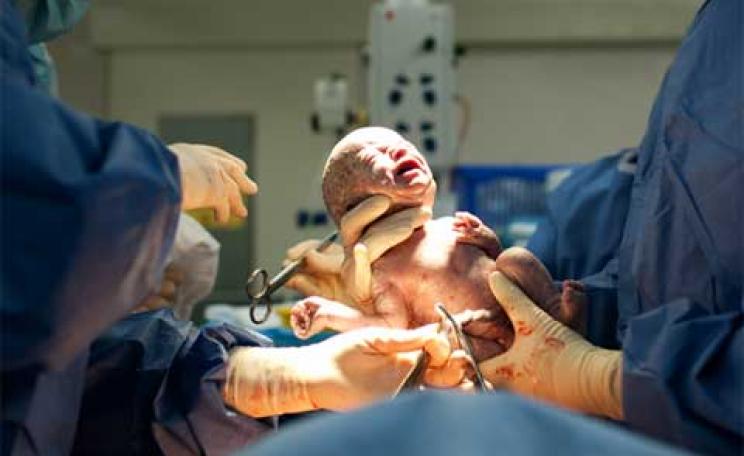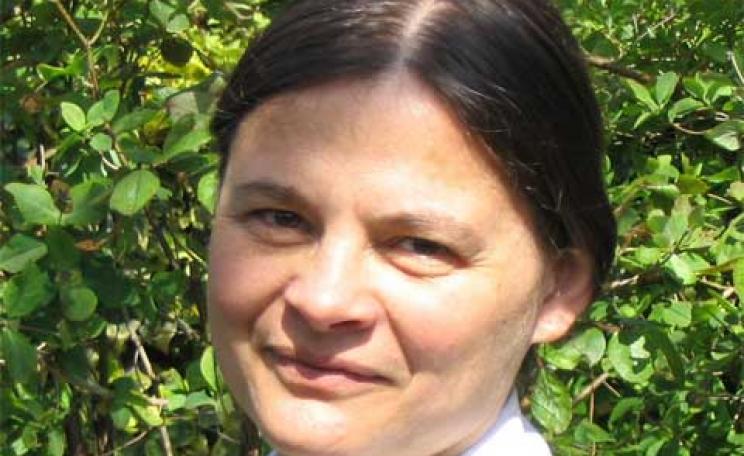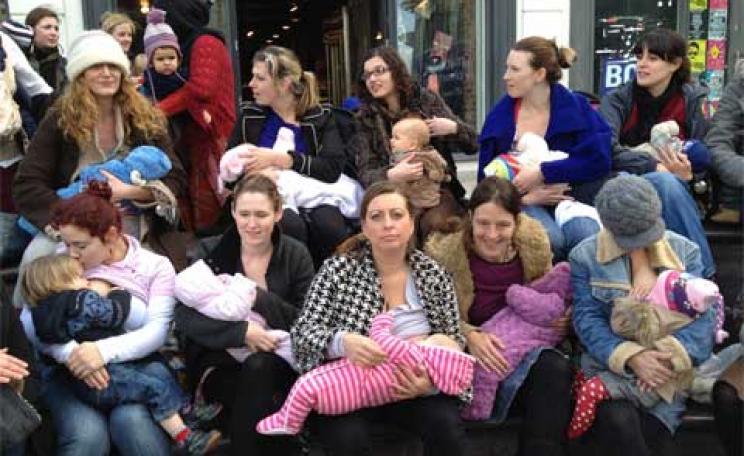Joe Ramos, interim dean of fine and performing arts at the state college in New Paltz, New York, hung up on me – terminated the call, as he politely put it – just before replacing the handset. A relatively new arrival, he had never heard that Parker Theater, where his students study and perform, was contaminated with PCBs and dioxins after a transformer explosion in December 1991.
This gives an idea of how quiet it’s kept on campus, how taboo a subject it is. So, I explained to him the history of the incident. I described the theatre, wrapped in plastic sheeting for weeks after the explosion so that rainwater would not spread the toxins further into the environment. I described the pipes freezing and bursting in January 1992 during the early phase of the cleanup, and the hundreds of toxic waste barrels that were used to collect the contaminated water.
I told him I didn’t know whether the theatre’s costume collection had been thrown out after the building fogged over with dioxin and furan-laced smoke, or whether students were still performing in clothing that could never be cleaned and only be tested by being destroyed. I explained how PCB smoke works its way into crawl spaces, above hung ceilings and into pipe chases, and how, once the contamination has seeped in everywhere, it verges on impossible to get a building clean.
And I assured the dean that his bosses and their bosses would give him a very different story: a blanket reassurance of safety and the usual line that I am the one who has a problem.
He was angry. I wasn’t surprised. I was nervous, and angry, and emotional, which did surprise me. After covering PCBs and dioxins for nearly two decades I thought nothing could shake me, but recently the issue had become personal. Now I was friends with someone who was about to enter the theatre department; a talented, fragile young woman who would be one of the vulnerable.
New Paltz excels in one area, the arts. Getting into this programme was an achievement for her. She deserved this, and she deserved a lot better. Given the choice, I told her, it’s better to delay school by one year than get leukaemia or endometriosis. After she went I picked up the phone.
Psychology of a cover-up
Having hung up on me, threatening to check my journalistic credentials without even taking my name or phone number, I rang Dean Ramos’s secretary to pass along my contact information. While I had her attention, I explained the issue.
There are not a lot of people on the New Paltz campus who will speak to me, and I’ve heard that professors are concerned about the theatre, but are also afraid even to be seen with me, fearing for their jobs. I told her about the parents who on opening day, having heard about the contaminated dormitories, leave their sons and daughters on campus without asking questions. I told her about the people who call me to find out whether their brain cancer, leukaemia or endocrine disease has come from their time attending the college, five or 10 years after the fact.
Hearing about the issue, students are afraid to tell their parents – my friend said even hers would be angry to hear about it. Angry at whom? At her? At me? I’ve rarely heard a parent get angry at a campus administration that is 100 per cent responsible for the lives of its students, under an old common law principle called in loco parentis.
I mentioned to the secretary how the college administration had called the police on me so many times for reporting on campus it had become a running joke between me and the cops.
‘Your campus needs psychologists,’ I told her, ‘not toxicologists, to figure out why this is happening.’
Hormonally yours...
It is often said that a university is a microcosm of the world. If this is true, we can get a good idea why environmental issues are still only a boutique news item, despite the general contamination of the ecosphere, and the fact we all know toxic chemicals are bad for us.
By general contamination, I am referring to hormonally active toxins, which range from heavy metals to plasticisers to dioxins and PCBs. Our society is awash with these substances, which act like hormones,
scrambling the body’s signals, compromising the immune system and damaging the genetic code. By awash, I mean present in every breath of air and nearly every bite of food.
The issue is simply too big for most mortals to grasp. If what I’ve just said is true, and if we can’t avoid the problem, then why think about it? It seems like worrying about a meteorite hitting you. To take on the story would be to go after the big one, the proverbial octopus: the scandal of industrial capitalism itself.
The core issue here is who profits from the contamination? And who is hurt by it? Polluters always make it sound as though the person taking on the poison benefits, whether through being able to live in a dorm, through some new technology or an economic advantage. In truth, corporations and institutions deceive others in the name of a direct motive, which is profit and gain.
Those bent on getting the truth out are generally motivated by something else, like protecting the health of potential exposure victims. The gap between one mindset and the other can be the subject of a lot of psychic pain, because the two motives exist in different universes. It’s necessary for the reporter to bridge the gap between people who are poisoning others for profit, and those who have no concept that such a thing as possible.
Both sides are likely to pretend you’re insane, that you have no idea what you’re talking about. To be an investigative reporter it’s generally necessary to get accustomed to being called a nutter – no matter how much documentation you may have, and how solid or obvious your theory is.
It’s easier when people put up a fight – there at least it’s possible to express some energy. Being ignored is frustrating, but it has a tendency to turn to fuel; to convert a modest drive to get the story right, to expose the truth, into an obsession. Through doing the story there exists a drive to prove oneself right, and a deeper need to understand and expose the truth. To stay healthy it’s necessary to remain in contact with that deeper motive.
Media toxicity
It is rare that anyone has the time or resources to do this properly. News organisations don’t generally pay for this kind of reporting, and in the US, at any rate, they are often owned by the same corporations that create the toxins. ‘If it bleeds, it leads’ remains the silent motto of TV news. Toxin issues fit the three-day (or more often, threehour) news cycle only if something specific is happening, such as an obvious toxic spill that makes pictures, which can be covered briefly and dismissed as cleaned up – if we hear about it at all.
In this context, there is really no way to report the contamination of the planet except in a documentary, a book or a specialised publication such as the Ecologist. Bill Moyers has told the story a couple of times, but then what exactly can you do about it? Stop eating and breathing?
Everyone ‘understands’ that the contamination of the planet is necessary to sustain our industrialised, high-tech lifestyle. We at least accept that it’s necessarily a consequence of our way of life. It is the company town mentality on a global scale. In a coal-mining town, everyone knows that the coal poisons the miners and puts food on the table. If the family wants to eat, it’s presumed that somebody has to
work in the mine.
If the truth about the toxins were known, or even investigated honestly, faculty, staff and administrators at New Paltz fear the campus would close, hundreds of jobs would be lost in an area with a thin economy and nothing would really be gained. After all, the world itself is contaminated – what harm is a little more going to do? Jobs are more important than what seems like an abstract issue.
This thought is used as a substitute for knowing or even being curious about the truth; that is, for figuring out how many people actually get sick from attending the campus, who exactly gets sick, and why.
A shared burden
I have often said that New Paltz is everywhere. How many people were poisoned manufacturing the computer I am typing on? It contains toxins, and when it is someday burned as hazardous waste will produce many more. There is a fear of hypocrisy even in raising the issue; on some level, everyone feels at least a little bit responsible because we Westerners enjoy so many unsustainable and dangerous luxuries that are seemingly poisonous to others more often than to us.
How many mobile phones have you owned? I don’t even like the things, I barely use them and I’ve probably owned 10 since I first got one in 2000. It does not help that in order to switch carriers or move countries, you often have to purchase a new phone. Then comes the BlackBerry. Then comes the iPhone. Then a mountain of phones, chargers and handheld devices that would stand tall next to Etna.
We rely on these things to organise our lives and keep pace with the speed of technology. What exactly do you do when you fi nd out that they are associated with brain tumours?
Fission for the truth
From the time Chernobyl blew in spring 1986, I knew I would be an environmental journalist. My main field was politics; I aspired to be the editorial page editor of a major newspaper, but with that incident the world changed – it was a different place. Radiation from a corner of the Ukraine was turning up around the globe; thousands of Ukrainian towns and cities were destroyed. French cheese and US milk would contain the same radiation from one nuclear reactor thousands of miles away.
After covering a diversity of industries as a trade journalist (beverage alcohol, towing, medical education), I ended up covering public higher education. As a grad student at New Paltz, I started a news service covering the state and city universities of New York.
I was busy doing this when, at 7.30am one Sunday in 1991, I was awakened by the sound of sirens going past my girlfriend’s house. When I went to work later that day there was a note on my desk: PCB transformers on New Paltz campus had exploded, contaminating several buildings. I knew enough to stay away.
Within 24 hours I was in contact with Lois Gibbs, who had organised the evacuation of the Love Canal neighbourhood. I had talked to Ward Stone, the state wildlife pathologist and one of the most revered anti-toxin scientists in the world. Paul and Ellen Connett, longtime municipal waste incinerator activists, were feeding me information and contacts.
I didn’t know I had stepped down the rabbit hole. If you had told me I would still be writing about the campus in 2009, I would have been stunned. My investigation took me back to 1929, when Swann Chemical began making chlorinated biphenyls, through the company’s acquisition by Monsanto in 1935, and deep into a cover-up involving General Electric and Westinghouse. My work was published everywhere from Sierra Magazine to the Las Vegas Sun and the Village Voice. The New York Times followed the saga of my coverage for a while, including a federal lawsuit against the administration for banning me from campus.
I won a first-place award for my coverage, and that night, when two of my older, wiser friends took me out to dinner to celebrate, I said I wanted to send it back to the state press association.
They asked why. Because after writing hundreds of articles, I responded, the dorms and the theatre were still open; students were still being contaminated. They assured me that my coverage had resulted in a much more thorough clean-up, which (though badly done) was better than nothing. They reminded me I had forced New York State to spend more than $50 million to make at least some effort to solve the problem.
So I kept going, focusing on the two dorms I feared were contaminated and which of all the buildings had been cleaned up least: Gage and Capen halls. In the back of my mind, though I couldn’t focus on it, was the condition of the theatre, which always worried me.
By this spring, when I was asked to write this article, I was ready to give up. Nobody on campus wanted to deal with the issue. Nobody wanted to hear about the problem and nobody was willing to take responsibility for the young students who were being contaminated. Campus officials worked for the state and if the state said it was safe, then by golly it was safe. And besides, we want our teaching jobs. I knew this was the company town mentality that was gradually poisoning the planet.
That’s when I called Dean Joe Ramos, to make sure he knew and cared about my friend, who was about to enter one of his departments. When he hung up on me it felt like a direct invitation: to get back on to the story; to not give up; to keep fighting.
Eric Francis Coppolino is an investigative journalist and editor of PlanetWaves.net
From one small town to everywhere...
New Paltz is a small village in the mountains of eastern New york state. Like most public institutions, its state college was outfitted with PCB electrical transformers in the 1950s and 1960s, ostensibly as safety equipment.
Manufacturers knew that when the PCB fluid breaks down from extended use, it forms a gas that can cause the whole transformer to explode, creating dioxins and furans, some of the most toxic chemicals known to science.
On the morning of 29 December 1991, transformers in six campus buildings – Bliss, Capen, gage and scudder dormitories, Parker theater and the Coykendall science Building – burned or exploded as a result of an off- campus traffic accident that damaged an electrical utility pole. the resulting equipment failures spread toxins throughout the buildings, in the form of fumes, smoke, soot and dielectric fluid.
The campus was closed for holidays at the time, and only a dozen students and staff exposed during the evacuation of Capen hall (where international students were being housed). hazardous materials workers in level-a moonsuits – the highest level available, concealing the air tanks inside the protective garment – swarmed over the campus with sampling kits, in an effort to ascertain what had happened. another 15 buildings were found to be contaminated.
Many agencies became involved: the health departments of the County of Ulster and the state of New york; the state Department of environmental Conservation; the state University of New york central administration; the state Dormitory authority and the college itself. Private contractors were brought in to help with the clean-up.
One month after the transformer incidents in New Paltz, two of the dormitories were declared safe and clean by the various agencies, and students were moved back in. No contamination tests were run on the buildings’ heating, vents or electrical conduits. many other shortcuts were taken and assumptions about safety made in the course of the clean-up.




